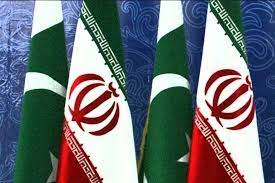Title: Pakistan Takes Steps to Lower Pressures with Iran: Introduction: A Diplomatic Need for Regional Stability
Pakistan resolves to lower tensions with Iran - Pakistan
In the steadily developing scene of global relations, sensitive overall influence and collaboration assume a critical part in molding the predetermination of countries. As of late, Pakistan has made a critical stride towards encouraging strength in the district by setting out to bring down pressures with its neighbor, Iran. This choice is established in a mind-boggling trap of verifiable, international, and financial elements that request a nuanced assessment. This article digs into the critical drivers behind this political drive, the difficulties it faces, and the possible ramifications for local elements.

Verifiable Setting:
It is essential to investigate the historical context of Pakistan and Iran's relationship in order to comprehend the current diplomatic overture. The two countries share well-established verifiable, social, and monetary ties, going back hundreds of years. Nonetheless, in the same way as other adjoining nations, they have likewise confronted times of pressure, frequently filled by line questions, territorial international affairs, and outer impacts. Perceiving and resolving these verifiable issues is essential for building a groundwork of trust and participation in the present.
International Contemplations:
Diverse actors vie for control and influence in the intricate geopolitical landscape of South Asia and the Middle East. Pakistan and Iran, as key provincial players, end up at the intersection of various international difficulties. Offsetting relations with significant powers, tending to the effect of struggles in adjoining Afghanistan, and exploring the perplexing elements of the Center East are only a couple of the contemplations that have an immediate bearing on their conciliatory ties. A guarantee to bring down strains flags an essential move to focus on local strength over possible dissension.
Monetary Association:
Pakistan and Iran recognize the mutual benefits of fostering stronger economic ties in an era when economic interdependence is becoming a driving force in international relations. The two nations have critical assets and open doors that can be bridled through coordinated effort. The resolution to lower tensions opens up opportunities for increased trade, energy cooperation, and joint development projects, all of which contribute to the prosperity of both countries and the region as a whole.
Difficulties and road obstructions:
While the aim to bring down strains is admirable, the way to an effective political goal is full of difficulties. Line issues, authentic complaints, and the intricacies of provincial elements might block progress. Also, outer tensions from worldwide powers and non-state entertainers could impact the direction of reciprocal relations. Exploring these difficulties requires skilled tact, compelling correspondence, and a common obligation to focus on territorial solidness.
Suggestions for Territorial Elements:
Pakistan's decision to ease tensions with Iran has far-reaching effects on the dynamics of the region as a whole. Further developed relations between these two vital participants can add to a steadier South Asia and Center East. It can possibly have a cascading type of influence, empowering different countries in the locale to focus on exchange and participation over conflict. The gradually expanding influences of such a political shift can decidedly impact provincial security, exchange, and social trade.
Global People Group's Reaction:
The global local area assumes a significant part in molding the progress of strategic drives between countries. The reaction to Pakistan's determination to bring down pressures with Iran fluctuates, with some hailing the move as a positive step towards provincial steadiness, while others remain hopeful but still sober-minded. Offsetting associations with other vital participants in the worldwide field, like the US, China, and Russia, will require talented strategy and key moving.

Conclusion:
In a world set apart by complex international elements, Pakistan's goal to bring down strains with Iran arises as an encouraging sign for local steadiness. An in-depth and comprehensive examination is required to take into account the economic, geopolitical, and historical factors that influence this choice. The obstacles and challenges that lie ahead must be navigated with diligence and commitment as both nations begin this diplomatic journey. This decision has repercussions that go beyond bilateral relations and shape the future of a region with a lot of potential for development, cooperation, and shared prosperity. The engagement and support of the international community will be crucial to the success of this diplomatic endeavor and the development of a more peaceful and secure future for South Asia and the Middle East.



You must be logged in to post a comment.